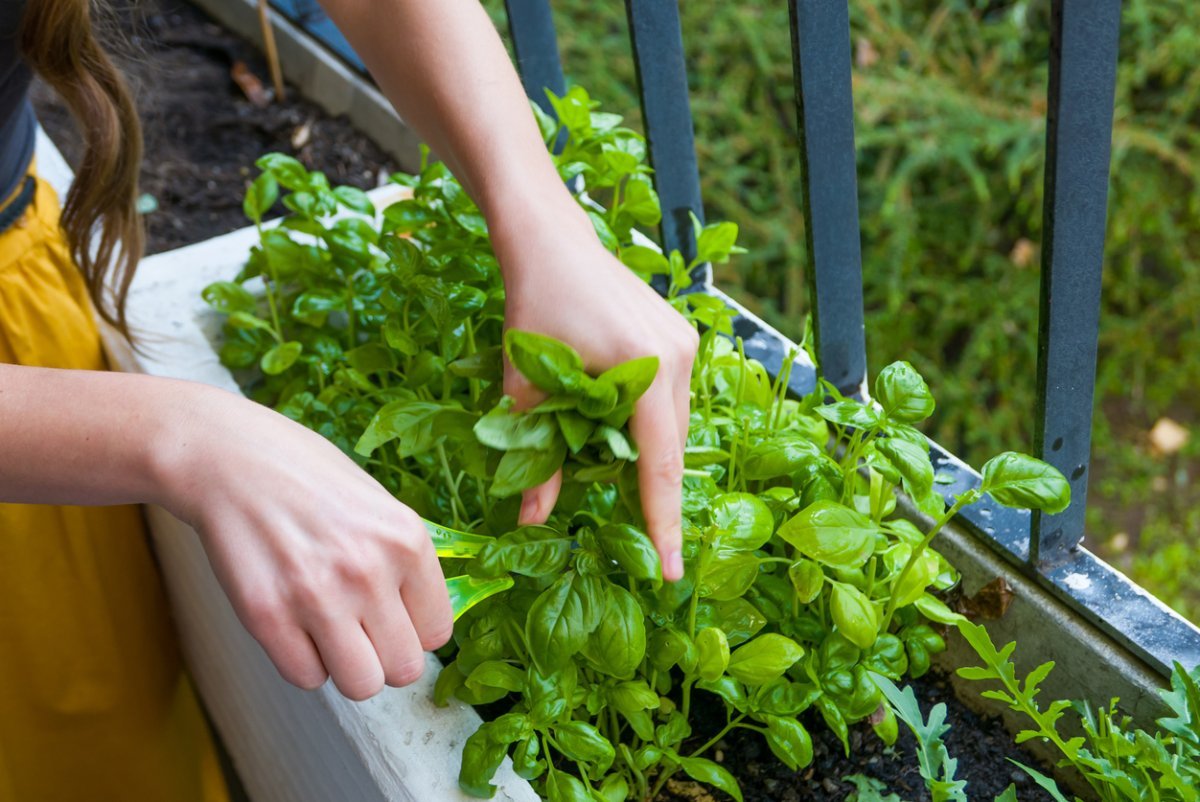

Articles
How To Store Basil From Garden
Modified: February 28, 2024
Learn how to properly store basil from your garden with these helpful articles. Preserve the flavor and freshness of your basil for longer periods.
(Many of the links in this article redirect to a specific reviewed product. Your purchase of these products through affiliate links helps to generate commission for Storables.com, at no extra cost. Learn more)
Introduction
When you have a garden full of fragrant and flavorful basil, it’s important to know how to store it properly to preserve its freshness and taste. Basil is an essential herb in many recipes, and having a stash of freshly stored basil will allow you to enjoy its vibrant flavors year-round. Whether you harvest basil from your garden or purchase it from the store, learning the best methods for storing basil will ensure it stays flavorful and ready to use whenever you need it.
In this article, we will explore various techniques for storing basil from your garden. From freezing basil to making basil pesto, and from storing basil in oil to keeping it in the refrigerator, we will cover all the methods you need to know to extend the shelf life of your basil leaves. Let’s dive in and discover the secrets to preserving the freshness and taste of your garden-fresh basil.
Key Takeaways:
- Preserve the vibrant flavor of garden-fresh basil year-round by freezing, making pesto, or storing in oil, vinegar, salt, butter, or ice cubes. Experiment with different methods to elevate your culinary creations.
- Harvest, wash, dry, and store basil using various methods to maintain its freshness and aroma. Enjoy the delightful taste of basil in your dishes with these creative storage techniques.
Read more: How To Store Cut Basil
Harvesting Basil
Before diving into the different storage methods, it’s important to know when and how to harvest basil. Basil leaves are most flavorful before the plant flowers, so it’s best to harvest them before they reach that stage.
To harvest basil, simply use a pair of sharp garden shears or scissors to cut the stems just above a pair of leaves. This will encourage new growth and result in a bushier plant. Avoid removing more than one-third of the plant at a time to ensure its health and productivity.
If you have a surplus of basil, harvesting the entire plant is an option. In this case, cut the stem at the base, leaving a few inches of stem intact. This allows for an easy and clean transfer to the next step of the storage process.
Now that you know how to harvest your basil, let’s explore the different methods for storing it to maintain its vibrant flavor and aroma.
Washing and Drying Basil
After harvesting your basil, it’s crucial to wash it thoroughly to remove any dirt, insects, or debris. To do this, fill a bowl or sink with cold water and gently submerge the basil leaves. Swish them around to loosen any dirt and then remove them from the water.
Next, pat the basil leaves dry with a clean kitchen towel or use a salad spinner to remove excess water. It’s essential to ensure the basil leaves are fully dry before storing them, as excess moisture can cause them to wilt and spoil more quickly.
Once your basil leaves are dry, it’s time to move on to the next step of the storing process. Choose a storage method that suits your preferences and culinary needs. Whether you prefer freezing basil, making basil pesto, or storing it in oil, there’s a method that will work for you.
Freezing Basil
If you have an abundance of fresh basil and want to preserve it for an extended period, freezing is a great option. Freezing basil allows you to enjoy its fresh flavor and aroma even during the off-season.
To freeze basil, start by blanching the leaves to help retain their vibrant green color. Bring a pot of water to a boil and prepare a bowl of ice water. Submerge the basil leaves in the boiling water for about 10 seconds, then quickly transfer them to the ice water to stop the cooking process. Once cooled, pat the leaves dry and place them on a parchment-lined baking sheet in a single layer.
Place the baking sheet in the freezer for about an hour or until the basil leaves are frozen. Once frozen, transfer them to a freezer-safe container or zip-top bag. Make sure to label the container with the date to keep track of its freshness.
When you’re ready to use the frozen basil, simply remove the desired amount from the container and add it directly to your recipes. Frozen basil works well in soups, stews, sauces, and even pesto.
Alternatively, you can also freeze basil in oil to create convenient basil cubes. Puree the fresh basil leaves with a little olive oil and transfer the mixture into an ice cube tray. Freeze until solid, then remove the basil cubes and store them in a freezer bag. This method allows you to easily portion out the frozen basil cubes as needed.
By freezing your basil, you can enjoy its wonderful flavor and aroma all year round, even when it’s not in season. This method is perfect for preserving larger quantities of basil from your garden or taking advantage of a great sale at the store.
Making Basil Pesto
If you’re a fan of the delicious and versatile basil pesto, you can make a large batch and store it for future use. Basil pesto is a flavorful combination of fresh basil leaves, garlic, pine nuts, Parmesan cheese, olive oil, and a touch of lemon juice.
To make basil pesto, start by washing and drying a generous amount of fresh basil leaves. Combine the basil leaves, garlic cloves, pine nuts, and grated Parmesan cheese in a food processor or blender. Pulse until the ingredients are finely chopped.
While the machine is running, slowly drizzle in the olive oil until the mixture comes together into a smooth paste. Add a squeeze of fresh lemon juice and season with salt and pepper to taste.
Once your basil pesto is ready, transfer it to an airtight container and smooth the surface. Pour a thin layer of olive oil on top to create a seal and prevent oxidation. Close the container tightly and store it in the refrigerator.
Basil pesto can be stored in the refrigerator for up to a week or frozen for even longer storage. To freeze basil pesto, transfer it into ice cube trays and freeze until solid. Once frozen, transfer the pesto cubes into a freezer bag and keep them in the freezer for up to 3 months.
Basil pesto is a versatile condiment that can be used in various dishes. Mix it into pasta, spread it on sandwiches, use it as a pizza sauce, or add it as a flavorful topping to grilled meats and vegetables. Having a jar of homemade basil pesto on hand allows you to add a burst of deliciousness to your meals with minimal effort.
Read more: How To Store Basil From Store
Storing Basil in Oil
Another popular method for storing basil is to preserve it in oil. Storing basil in oil not only helps retain its flavor but also allows the oil to absorb the aromatic essence of the herb, making it a delicious addition to your culinary creations.
To store basil in oil, start by washing and thoroughly drying the basil leaves. Ensure there is no excess moisture on the leaves as it can cause the oil to spoil more quickly.
Next, place the dry basil leaves in a clean glass jar, gently pressing them down to pack them tightly. Cover the basil leaves completely with a high-quality oil of your choice, such as olive oil or avocado oil. Make sure the oil covers the basil leaves by at least an inch.
Seal the jar tightly and store it in a cool, dark place, such as a pantry or cupboard. The basil-infused oil will keep for several weeks, if not longer, as long as the basil remains submerged in the oil.
When using the basil-infused oil, simply remove the desired amount from the jar using a clean spoon or pour it gently. The oil can be used in dressings, marinades, sautés, or drizzled over dishes for a burst of basil flavor.
Remember to keep an eye on the jar and check for any signs of spoilage, such as mold or off-putting smells. If you notice any, discard the entire batch as it may indicate botulism risk.
Storing basil in oil is a wonderful option for preserving the herb’s flavor for an extended period. Not only does it add a delicious twist to your dishes, but it also allows you to enjoy the taste of fresh basil even when it’s not in season.
To store basil from the garden, trim the stems and place in a glass of water on the counter. Cover with a plastic bag and change the water every few days. This will keep the basil fresh for up to a week.
Storing Basil in Vinegar
Storing basil in vinegar is another fantastic method for preserving its flavor and aroma, while also infusing the vinegar with the herb’s essence.
To store basil in vinegar, start by washing and drying the basil leaves thoroughly. Once dry, place the basil leaves in a clean glass jar, pressing them down gently to pack them tightly.
Next, heat the vinegar of your choice, such as white wine vinegar or apple cider vinegar, until it reaches a gentle simmer. Pour the hot vinegar over the basil leaves in the jar, ensuring that the leaves are fully submerged.
Seal the jar tightly and allow it to cool completely. Once cooled, store the jar in a cool, dark place, such as a pantry or cupboard. The basil-infused vinegar will develop its flavor over time and can be used for several months to a year.
When using the basil-infused vinegar, you can strain out the basil leaves or leave them in for added flavor. The vinegar adds a unique twist to dressings, marinades, and sauces, providing a tangy kick along with the essence of basil.
As with any homemade infusion, it’s essential to keep an eye on the jar for signs of spoilage. If you notice any mold, strange smells, or changes in the appearance of the vinegar, it’s best to discard the batch.
Storing basil in vinegar not only helps preserve the herb but also creates a versatile ingredient that can elevate your culinary creations. Experiment with different types of vinegar to discover your favorite flavor combinations.
Storing Basil in Salt
Storing basil in salt is an excellent method for preserving its flavor and extending its shelf life. The salt not only helps to preserve the basil but also enhances its flavor and can be used as a seasoning in various dishes.
To store basil in salt, begin by washing and thoroughly drying the basil leaves. Make sure they are completely dry to prevent any moisture from causing spoilage.
Next, layer a glass jar or container with a thin layer of salt at the bottom. Place a few basil leaves on top of the salt layer, ensuring they are evenly spread out. Sprinkle a generous amount of salt over the basil leaves, covering them completely.
Add another layer of basil leaves and repeat the process of sprinkling salt over them. Continue layering the basil leaves and salt until the jar is full, ensuring the leaves are covered with salt throughout.
Seal the jar tightly and store it in a cool, dry place such as a pantry or cupboard. The salt-infused basil will stay fresh and flavorful for several months.
When you need to use the basil, simply remove the desired amount from the jar, brush off any excess salt, and rinse lightly if necessary. The salt-infused basil can be used as a seasoning in various recipes, providing a burst of flavor and a hint of saltiness.
It is important to note that the salt used in storing basil should not be reused for other purposes, as it may contain moisture and flavors from the basil. Therefore, consider reserving the salt specifically for basil-infused dishes to maximize its flavor and usability.
Storing basil in salt not only helps to preserve the herb but also creates a unique seasoning that can enhance the flavor of your favorite dishes. Give it a try and discover the delightful taste of salt-infused basil.
Storing Basil in Butter
Storing basil in butter is a delightful way to preserve the herb while infusing the butter with its aromatic flavors. The result is a flavorful compound butter that can be used in a variety of dishes.
To store basil in butter, start by washing and thoroughly drying the basil leaves. Once dry, finely chop the basil leaves or blend them in a food processor until you have a vibrant green paste.
Next, soften a stick of unsalted butter at room temperature. Once softened, mix in the chopped or blended basil leaves until well combined. You can also add a pinch of salt or other desired seasonings to enhance the flavor.
Place the basil-infused butter in a piece of plastic wrap or parchment paper. Roll the butter into a log shape and twist the ends to secure it. Alternatively, you can also shape the butter into individual molds or store it in a small airtight container.
Refrigerate the basil-infused butter for at least a few hours or until it becomes firm. The butter will keep well in the refrigerator for up to two weeks.
When ready to use, simply slice the basil-infused butter and add it to cooked vegetables, spread it on bread, melt it over grilled meats, or use it as a finishing touch for pasta dishes. The basil flavor will infuse into the dish, enhancing its overall taste.
Remember to store the basil-infused butter in an airtight container in the refrigerator to prevent it from picking up any odors or flavors from other foods.
Storing basil in butter not only preserves the herb but also creates a delicious and versatile ingredient that can add a burst of flavor to your dishes. Give it a try and savor the delightful taste of basil-infused butter.
Read more: How To Store Basil From Grocery Store
Storing Basil in Ice Cubes
Storing basil in ice cubes is a convenient and practical method for preserving the herb while maintaining its vibrant flavors. This method allows you to portion out the basil and easily add it to your dishes whenever needed.
To store basil in ice cubes, start by washing and drying the basil leaves thoroughly. Once dry, remove the leaves from the stems and tear them into smaller pieces.
Place a small amount of torn basil leaves into each compartment of an ice cube tray. You can either fill each cube completely with basil or mix the basil with a little water or olive oil to help keep it preserved.
Once the basil is in the ice cube tray, carefully fill each cube with water, olive oil, or vegetable broth, covering the basil leaves completely. This helps to protect the basil from freezer burn and preserves its flavor.
Place the ice cube tray in the freezer and let the basil cubes freeze until solid. Once frozen, remove the basil cubes from the tray and transfer them to a freezer-safe container or zip-top bag for long-term storage.
When you need to use the basil, simply take out the desired number of basil cubes and add them directly to your recipes. Whether you’re making pasta sauce, soups, or stir-fries, the basil cubes will melt and release their fresh flavor, enhancing your dishes with the delightful taste of basil.
This method allows you to have basil readily available, portioned out, and preserved in a convenient format. It’s especially useful during the off-season when fresh basil might not be readily available.
Remember to label the freezer container or bag with the date and make sure to use the basil cubes within six months for optimal flavor.
Storing basil in ice cubes is a hassle-free way to preserve the herb and ensure you always have a supply of fresh basil on hand. Give it a try and easily incorporate the flavor of basil into your favorite recipes throughout the year.
Storing Basil in the Refrigerator
The refrigerator is a simple yet effective way to store fresh basil for a short period. By following proper storage techniques, you can keep your basil fresh for longer and enjoy its vibrant flavor in various dishes.
To store basil in the refrigerator, start by washing the basil leaves and patting them dry with a clean kitchen towel or paper towel. Make sure to remove any excess moisture, as excessive dampness can cause the leaves to wilt and spoil quickly.
Next, place the dry basil leaves in a dry, airtight container or a plastic bag. Alternatively, you can also wrap the basil loosely in a damp paper towel to help retain its moisture.
Before sealing the container or bag, gently press out any excess air to create a snug fit around the basil. This will help prevent the leaves from drying out or becoming mushy.
Store the container or bag of basil in the refrigerator’s crisper drawer, where the temperature is slightly cooler and more consistent. The cool environment will help slow down the aging process and extend the shelf life of the basil.
It’s essential to check the basil regularly and remove any leaves that show signs of wilting or decay. This will prevent the spoiling leaves from affecting the rest of the stored basil.
Stored properly, basil can remain fresh in the refrigerator for up to a week. However, it is best to use it as soon as possible for the most vibrant flavor.
Take note that basil leaves may darken slightly in the refrigerator, but their flavor should still be intact. If you notice any discoloration, simply trim off the affected parts before using the basil.
When you’re ready to use the basil, remove the desired amount from the container or bag, and rinse the leaves if necessary. The fresh basil can be added to salads, sandwiches, pasta dishes, sauces, and more.
Storing basil in the refrigerator allows you to have a supply of fresh basil readily available for a short time. It’s a convenient method to preserve the herb’s flavor and ensure you can enjoy its aromatic essence in your culinary creations.
Conclusion
Preserving the freshness and flavor of basil is essential for any herb enthusiast or home cook. By employing various storage methods, you can extend the shelf life of your basil and have it readily available for a wide range of culinary endeavors.
From freezing basil and making basil pesto to storing it in oil, vinegar, salt, butter, or ice cubes, each method offers its own unique benefits and flavors. Whether you have an abundance of basil from your garden or want to make the most of a store-bought bunch, there’s a storage technique that will suit your needs.
Freezing basil allows you to enjoy its delightful taste throughout the year, while making basil pesto creates a versatile and flavorful sauce that can elevate any dish. Storing basil in oil, vinegar, salt, butter, or ice cubes infuses them with the essence of basil, adding a burst of flavor to your culinary creations.
When storing basil, it’s important to properly wash and dry the leaves to prevent spoilage. Additionally, always ensure that the storage containers are clean and airtight to maintain the freshness and flavor of the herb.
Whether you’re freezing basil for future use or storing it in oil to create a delicious infusion, experimentation is key. Don’t be afraid to try different methods and discover your favorite way to preserve the vibrant flavors of basil.
Remember to label and date your stored basil to keep track of its freshness. Use your stored basil within the recommended time frames to ensure optimal flavor and quality.
By mastering the art of storing basil, you can enjoy the taste of fresh basil year-round and elevate your dishes with its aromatic essence. So go ahead, explore the different methods, and start preserving the deliciousness of basil from your garden or the store.
Embrace the world of basil storage, and let its delightful flavors continue to enhance your culinary creations with every bite.
Frequently Asked Questions about How To Store Basil From Garden
Was this page helpful?
At Storables.com, we guarantee accurate and reliable information. Our content, validated by Expert Board Contributors, is crafted following stringent Editorial Policies. We're committed to providing you with well-researched, expert-backed insights for all your informational needs.
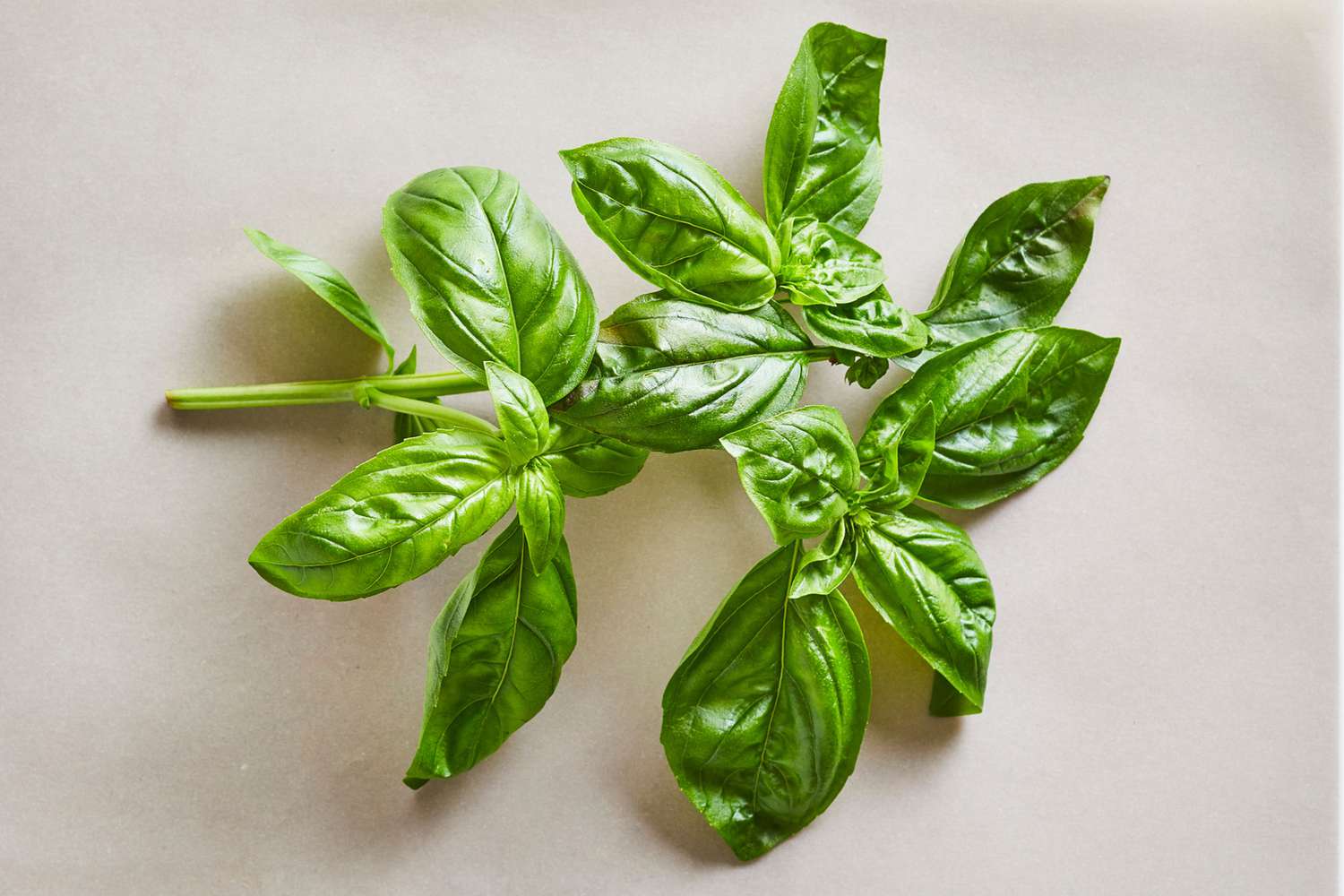
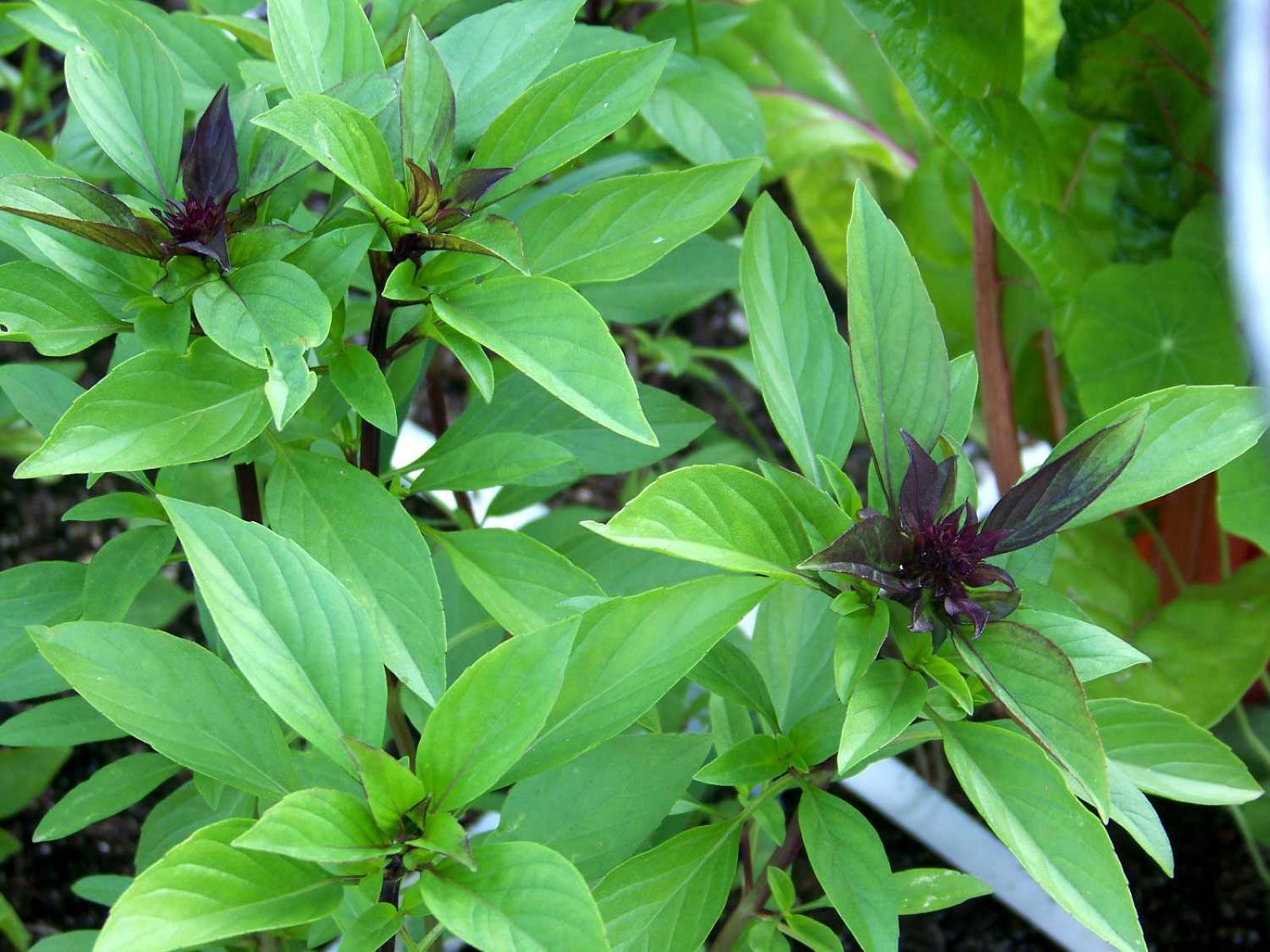
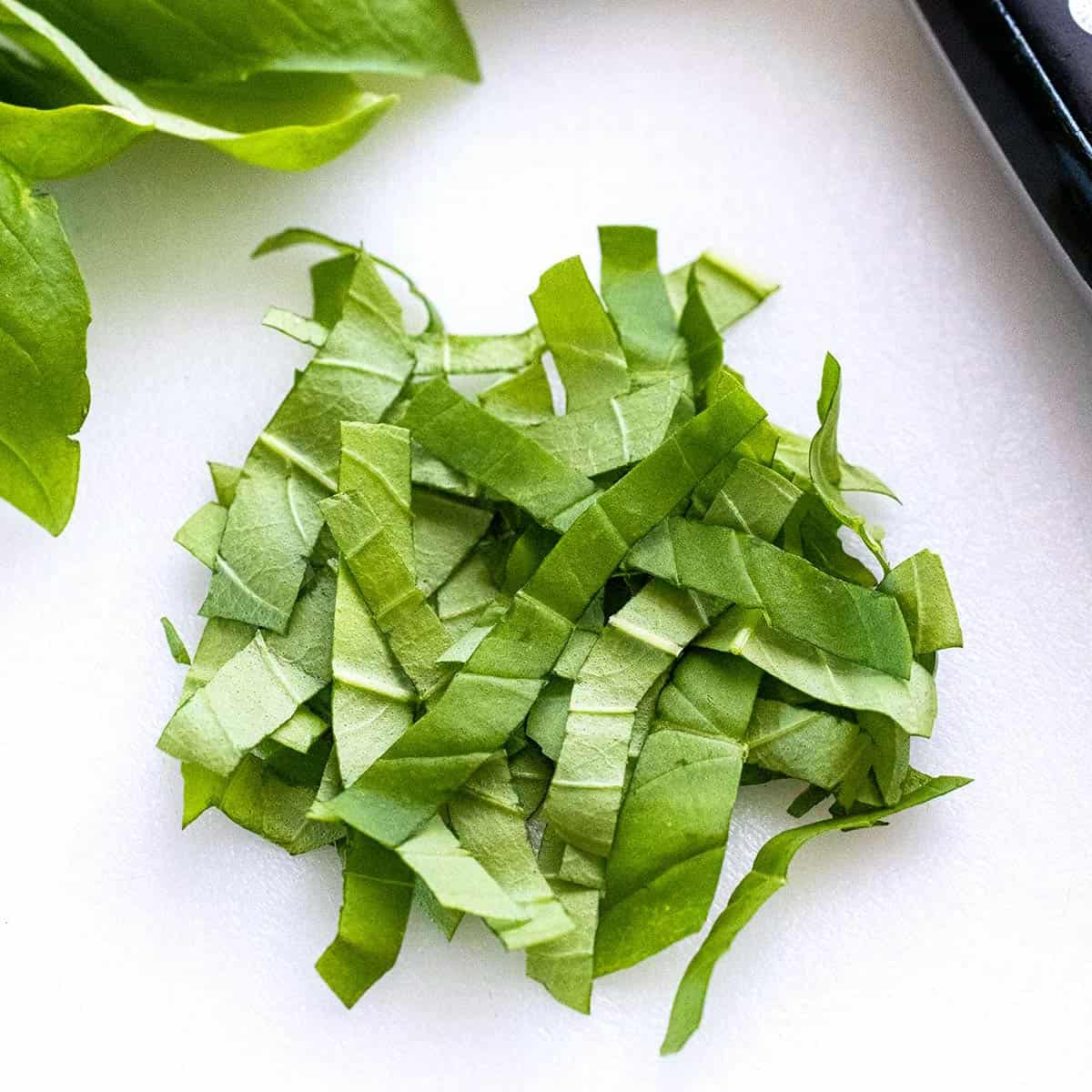
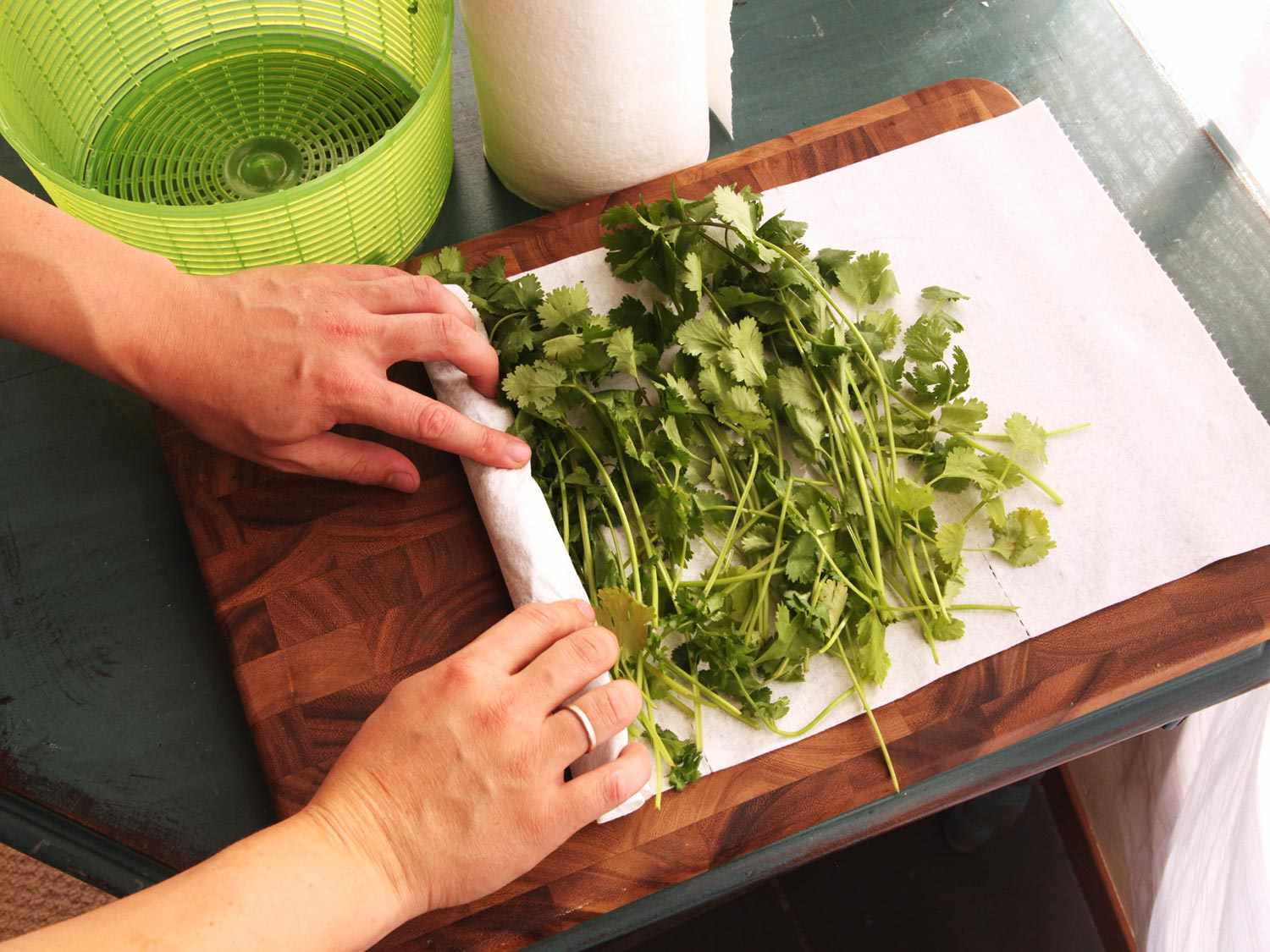
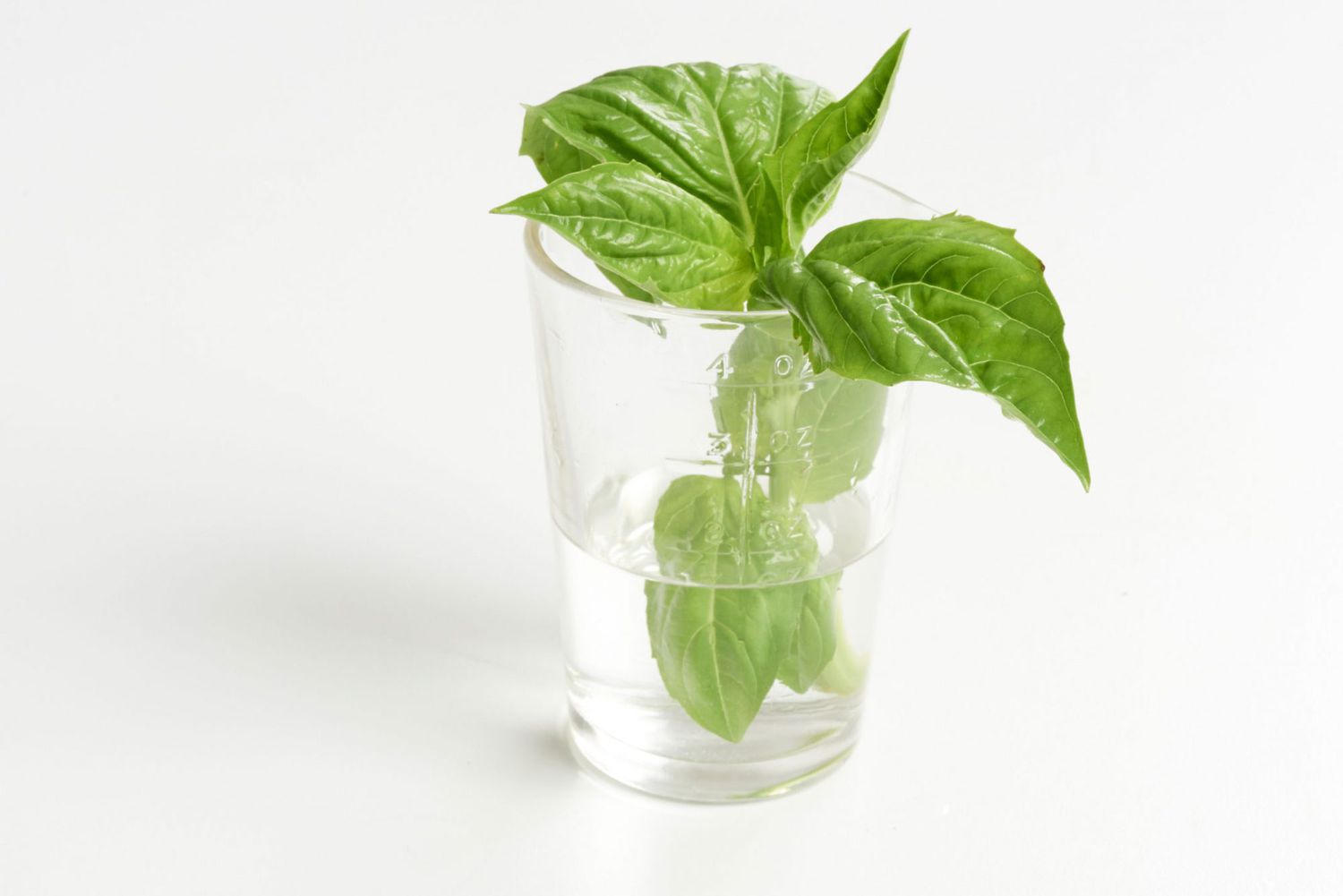
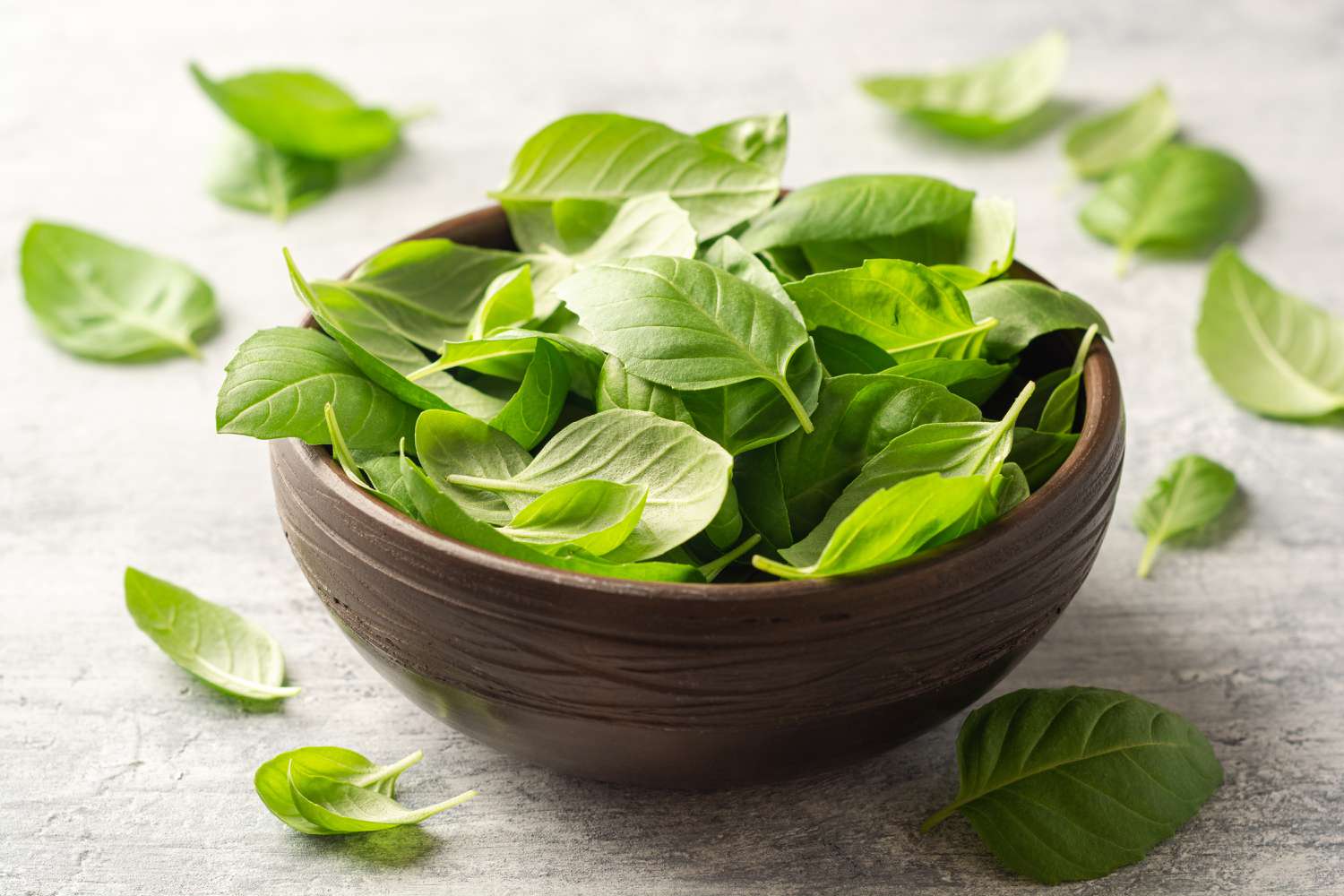
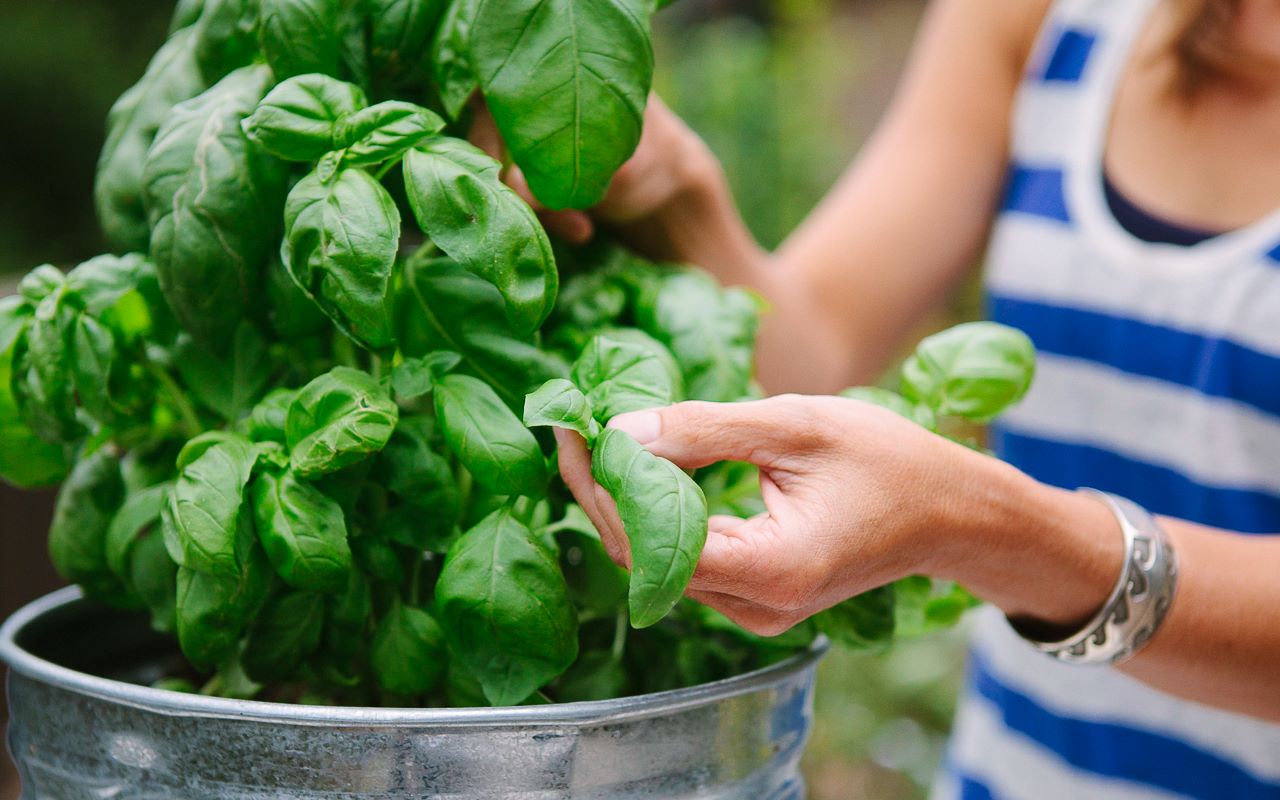
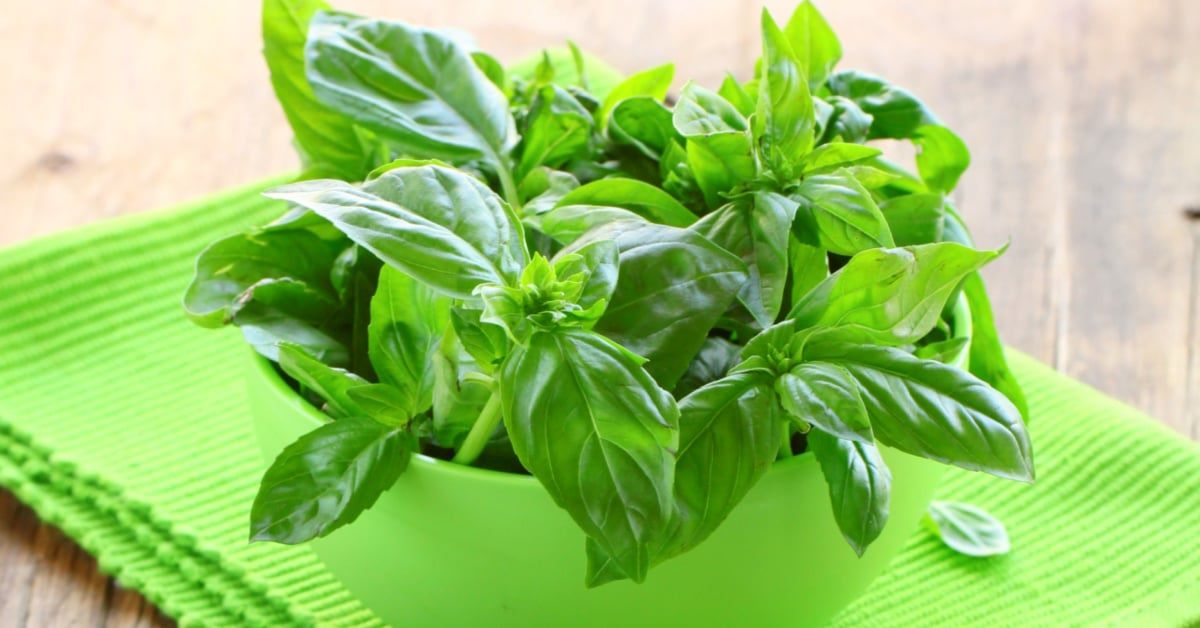
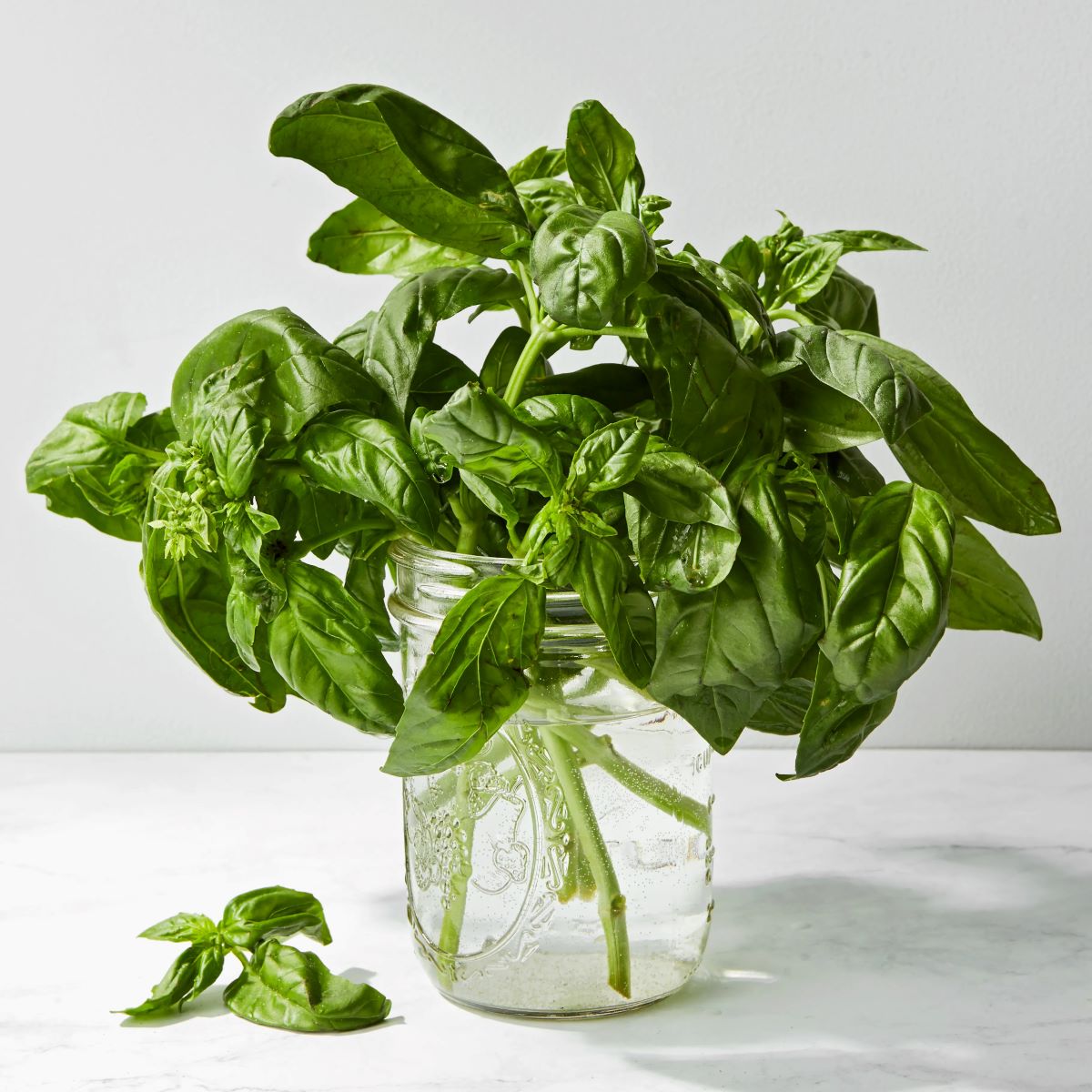
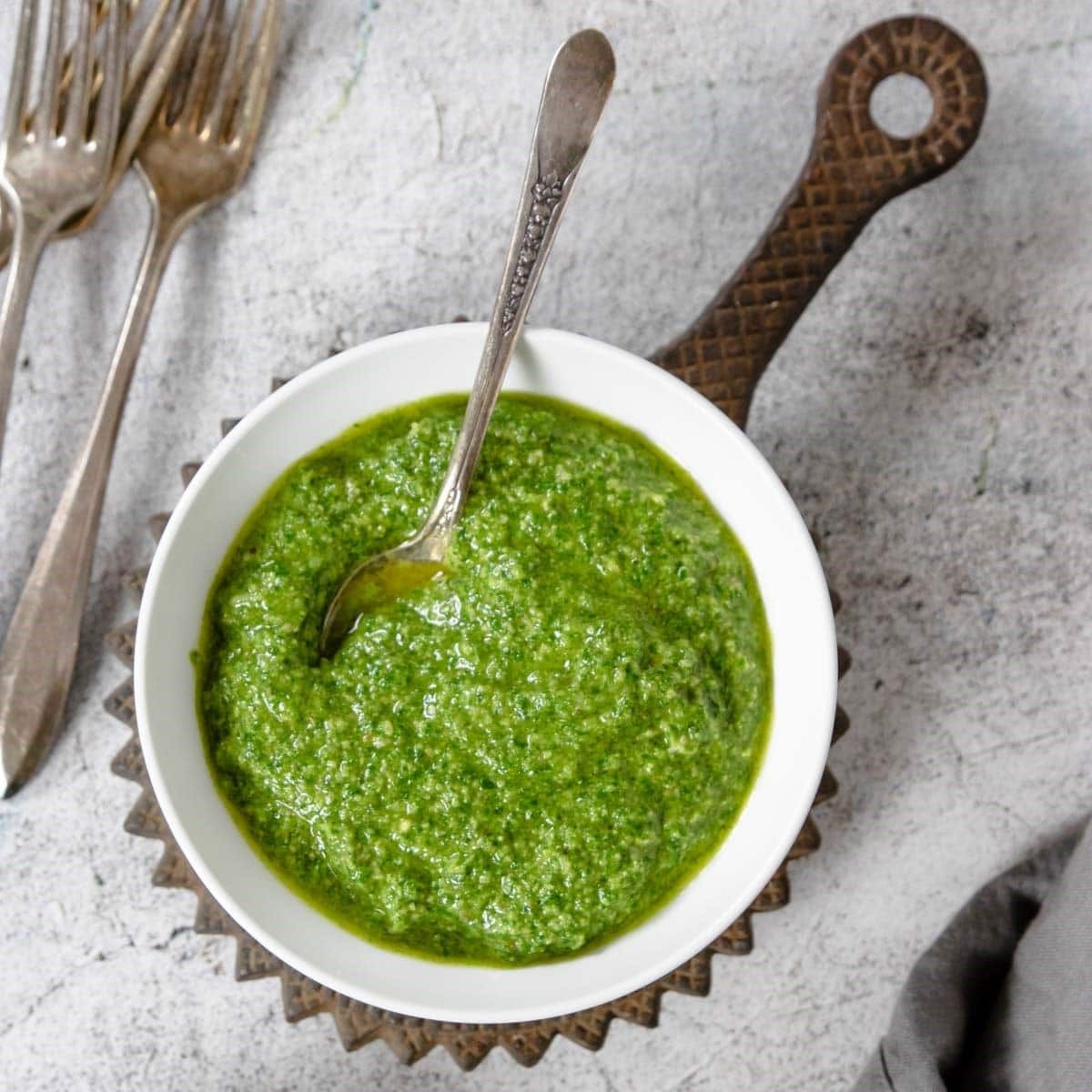

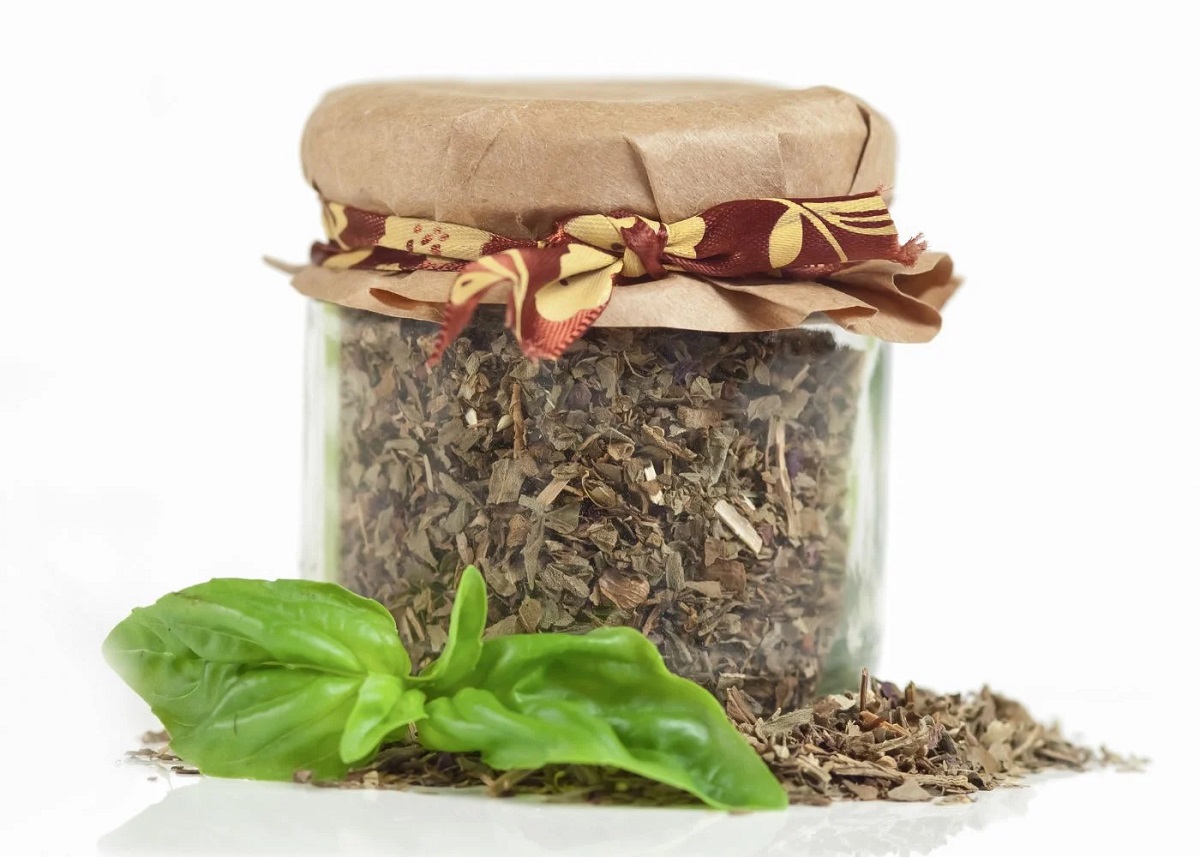
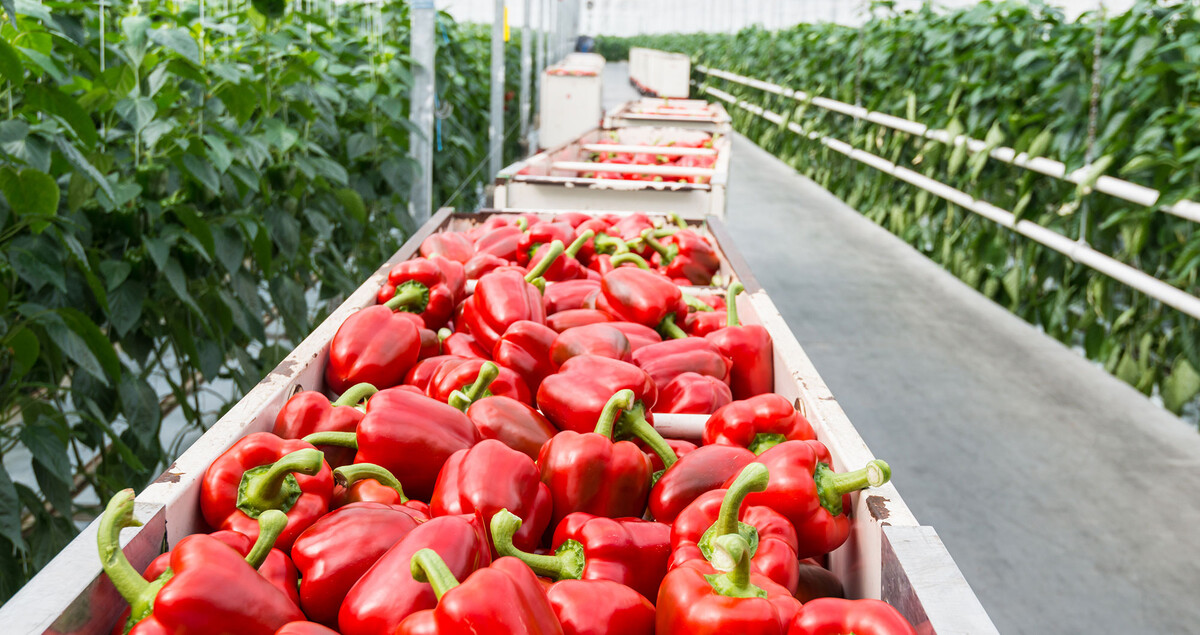

0 thoughts on “How To Store Basil From Garden”